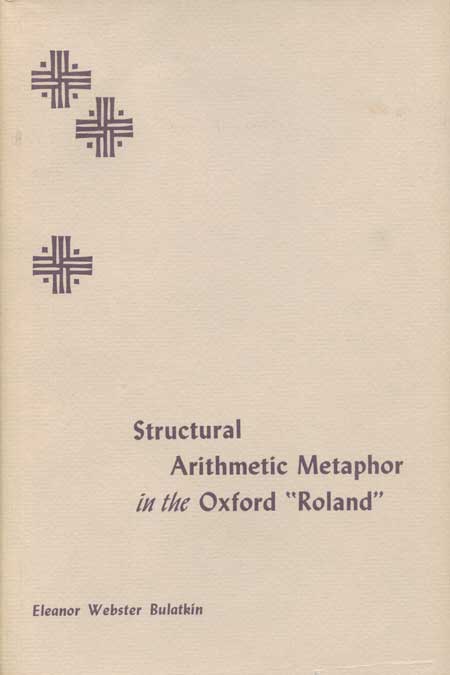| click here to read the complete text of the book | leave / read comments and critiques of the book |
 Structural Arithmetic Metaphor in the Oxford “Roland”
Structural Arithmetic Metaphor in the Oxford “Roland”
Eleanor Webster Bulatkin
“Structural arithmetic metaphor” is defined as an ordering of poetic form according to an arithmetic pattern that uses numbers whose symbolic meaning restates metaphorically some basic idea inherent in the content of the poem.
Although no ars poetica describing the device has come down to us, combinations of numbers have, in one way or another, been used in the structuring of literary works (as they have been employed in architectural and musical composition) since classical antiquity. At some times, they have served simply to achieve harmonies and symmetrical proportions; but at others, they have expressed symbolic meanings as well.
As Eleanor Webster Bulatkin points out, the conception of arithmetic structuring and the notion that numbers carry a metaphoric significance are thoroughly consonant with the whole number philosophy of the Middle Ages, itself the product of a tradition of great antiquity. The use of numerical composition has been demonstrated in studies of the Old French poem La Vie de Saint Alexis of 1040 and Dante’s Divine Comedy of 1321. The evidence is entirely sufficient to justify the assumption that the practice was known during the period encompassed by these two works, and it is to this era that the Chanson de Roland belongs.
The author suggests that there are discernible in the Oxford version of the epic two arithmetic structures: an earlier one, which was probably invented toward the beginning of the eleventh century, and a later revision, which may have been devised at the beginning of the twelfth. The numbers selected, she finds, were chosen for their metaphoric significance, and are designed to emphasize quite different thematic elements in the two versions.
Bulatkin demonstrates conclusively that the coherence of the poetic constructs and their congruence with the obvious intent of the poem, as well as with the evolving historic, aesthetic, and philosophic ambience in which it was composed, indicate a probability that is clearly well beyond chance.
Eleanor Webster Bulatkin was chair of the Department of Romance Languages, The Ohio State
University.
| 1972 115 pp. | This title is no longer available in a traditional print edition. Click here for free access to the book’s full text. |

